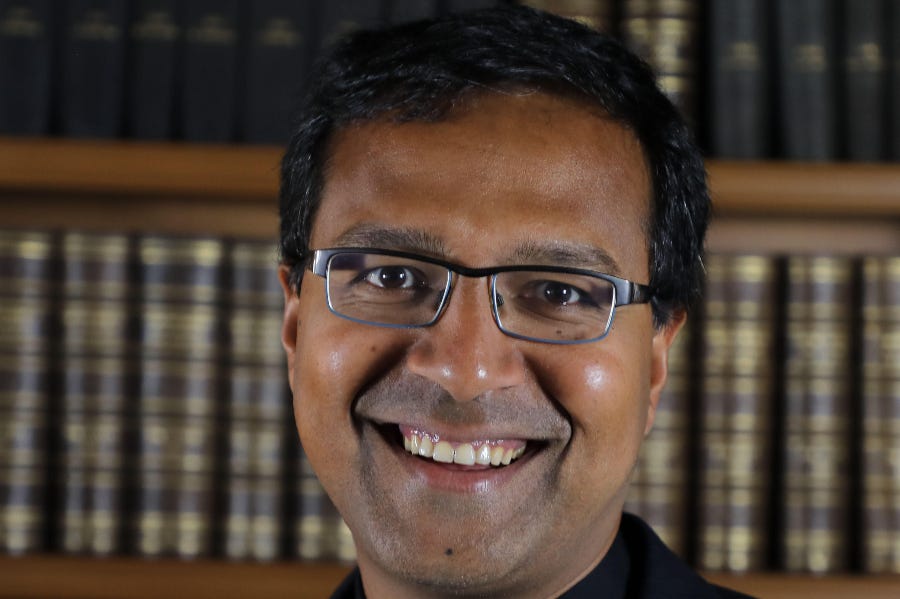In 1990, the future director of the Vatican Observatory was living in a refugee camp in Jordan.
Fr. Richard D’Souza was 12 years old at the time, and his family had just lost everything.
D’Souza was born in the Indian city of Pune, but his family emigrated to Kuwait for work. When the Gulf War broke out, they were forced to flee through Iraq and Syria to a camp in Jordan, where they lived for three weeks before returning to India.
During those weeks, when the family’s earthly possessions consisted of just a few bags, did D’Souza look up at the night sky and ponder the stars? Maybe. But it seems his interest in astronomy was truly awakened elsewhere.
After he had joined the Jesuits straight from school, he found himself studying physics in Heidelberg, Germany. He did his master’s thesis at the city’s Max Planck Institute for Astronomy. It was then that he discovered what he calls his “vocation for astronomy within my religious vocation.”
D’Souza describes himself today as a “galactic archaeologist,” a specialist who studies how galaxies form over time, with a particular focus on how they merge.
On Sept. 19, he succeeded the Detroit-born Br. Guy Consolmagno as director of the Vatican Observatory, becoming the first Indian to hold the post — a source of great pride in his homeland.
In an interview with The Pillar, D’Souza discussed his war-torn boyhood, humanity’s long-term prospects, and what it feels like to have an asteroid named after him.
You were born in India in 1978 but spent the first 12 years of your life in Kuwait, up to the Gulf War.
Did the war leave a lasting impression on you?
Yes, the war definitely has left its mark. We had to flee Kuwait — through Iraq and then stay at refugee camps in Jordan until we were airlifted back to India.
Losing everything, staying in a refugee camp, starting from scratch — all of this left a lasting impression on me.
I have a particular understanding of the situation in the Middle East: I understand how much of a tinder box it can be, and am very concerned about the recent developments there.
You have dedicated your life to studying the evolution of galaxies, with a special focus on galaxy mergers.
Can you explain in simple terms, for a layperson like me, how astronomers decide where one galaxy ends and another begins?
Galaxies are a large collection of stars, and they come in various shapes and sizes. Typically, the density of stars is very high at the center of the galaxy and then gradually decreases towards the outskirts.
Technically, it is difficult to define an edge of a galaxy: the density continues to decrease until it is difficult to find any more stars. Visually, it may appear that the galaxy has an edge. But this visual effect is due to the fact that as the density of stars in a galaxy decreases further out, at a certain point, the brightness of the night sky is greater than the brightness of that part of the galaxy.
However, if we do find a star out there on the outskirts, it is easy to talk about which galaxy it belongs to since the distance between galaxies is very, very large.
However, when two galaxies come very close to each other just before they merge, then it becomes very difficult to make the distinction of whether the outer stars belong to one galaxy or the other.
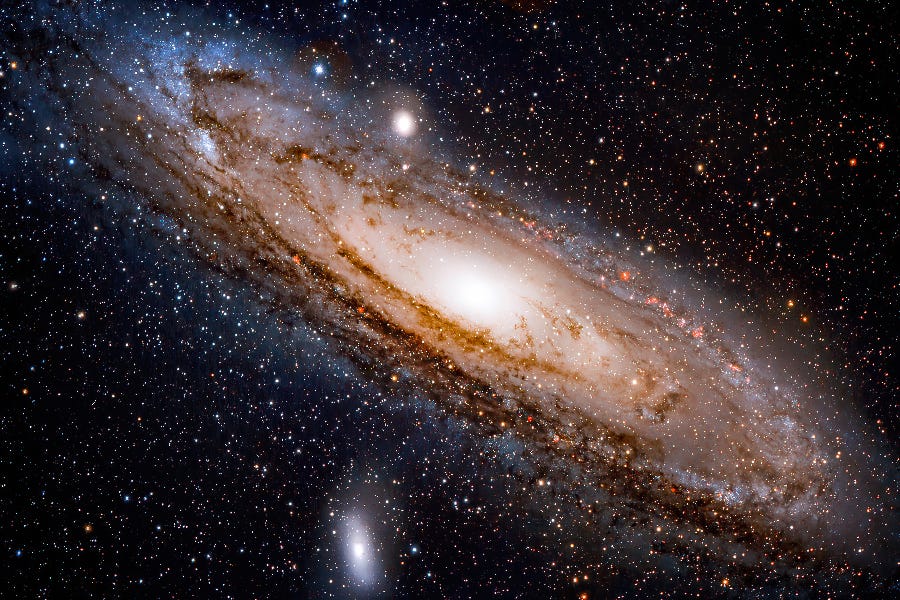
In 2018, you and your colleague Eric Bell unveiled the discovery that the Andromeda galaxy merged with another galaxy about two billion years ago. Eventually, our galaxy, the Milky Way, will collide with Andromeda.
What do you think the fate of humanity will be when the Milky Way and Andromeda meet in 4-5 billion years?
It is very difficult to predict and extrapolate the long-term fate of the human race — especially since humans have been around for a couple of million years.
But we can predict the long-term behavior of our star: It is clear that around the same order of time (4-5 billion years), the Sun will have exhausted its fuel and become a red giant star. It will eventually expand to a radius of the orbit of Mars, swallowing the Earth. To survive this catastrophe, the human race must leave the Earth and even the solar system.
As for the collision of the Milky Way with the Andromeda galaxy, since there is a lot of empty space between stars, the two galaxies will pass through each other — eventually becoming a giant elliptical galaxy.
It is highly improbable that the two stars will collide. However, the collision of the two galaxies will eventually lead to formation of a new generation of new young stars — whose harmful radiation can destroy all life on the earth. Eventually, even our little corner of the galaxy may not be entirely habitable.
However, I think that there are many more immediate problems that humanity must deal with: conflicts, international tensions, global warming, pollution, poverty, migration, etc.
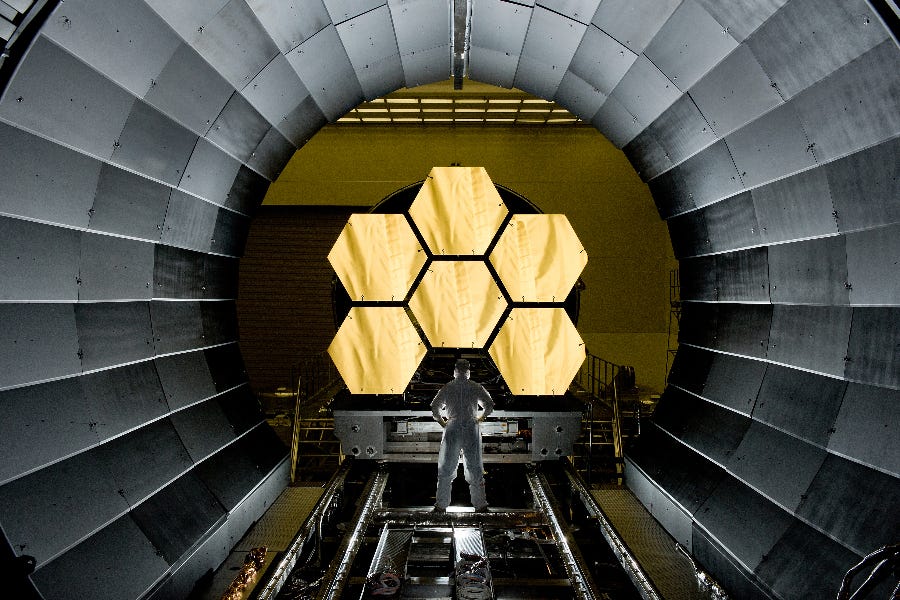
We can see about 46.5 billion light-years in radius from the Earth. Beyond a boundary known as the particle horizon, lies the unobservable universe.
What would you most like to know about this hidden realm?
Our model of the universe is based on the assumption that it is both homogenous and isotropic [the same in all directions]. From the universe that we can observe, this has been verified to be true.
But if we were able to see beyond the observable universe, it would be important to verify that these assumptions of the universe are true. If they continue to be true, then the hidden realm of the universe becomes less scientifically compelling. We can learn everything we need to learn about the universe from the observable part.
Although the observable universe is theoretically 46.5 billion light-years in radius, there is still a lot of it that we cannot see through modern telescopes.
Two particular frontiers come to my mind. First, the light from the very first galaxies at the beginning of the universe gets shifted more and more towards redder frequencies and gets increasingly obscured by dust. The new James Webb Space Telescope is helping in this regard.
Another frontier is low-brightness objects in the nearby universe which are also difficult to observe with present-day telescopes. With our telescopes, we only see the brighter objects. Furthermore, the greater the distance of the objects, the brighter they have to be to be observed. We need bigger and bigger telescopes to be able to see these low-brightness objects.
Is there still room for human creativity in astronomy, or is it now mostly driven by powerful telescopes and computers?
Yes, human creativity is very important in astronomy — especially to make sense of the large amount of data that comes from the new powerful telescopes.
The size of the data produced by modern astronomical instruments forces us to use computers to analyze them. However, we still have to critically understand the data and the analysis, and make sense of it in the larger scheme of things.
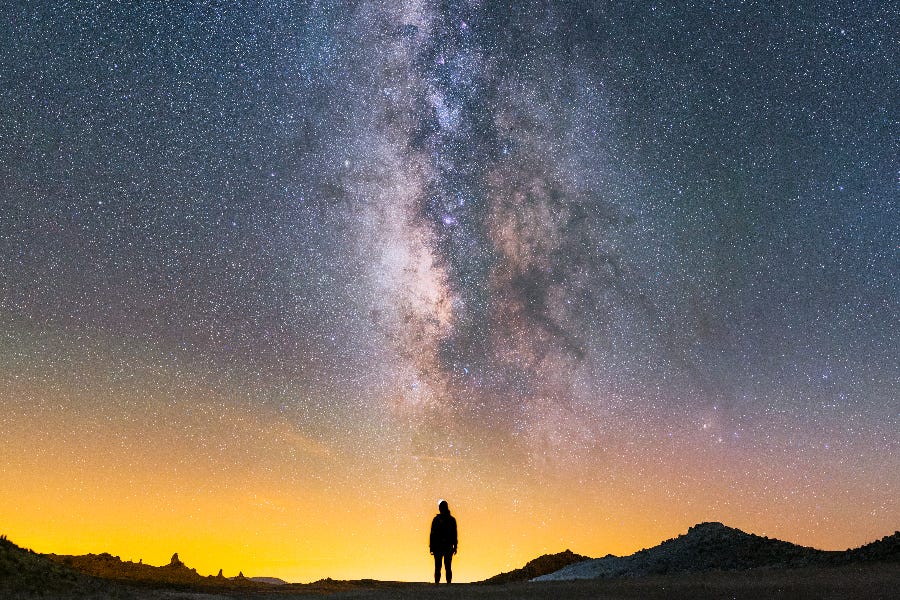
When you wake up in the middle of the night, is there a particular scientific mystery or puzzle that you wrestle with?
At the particular moment, I am fascinated with the dwarf satellite galaxies present in the Milky Way Galaxy, as well as other galaxies of similar size. I keep wondering how these dwarf satellites got there over time since the Big Bang, and what they can tell us about the merger story of these large Milky Way galaxies.
However, I must admit that I usually keep thinking of a number of problems in astronomy simultaneously. Once in a while, a new piece of information will present a solution to something I have been thinking about, and hence progress can be made.
Has there ever been a moment when you felt your faith was challenged by what you discovered as a scientist? If so, how did you resolve your doubts?
No, I have never felt that my faith was challenged by science. On the contrary, I feel that they go hand in hand well together. My scientific discoveries help me to praise God even more for the magnificent way in which he created the universe.
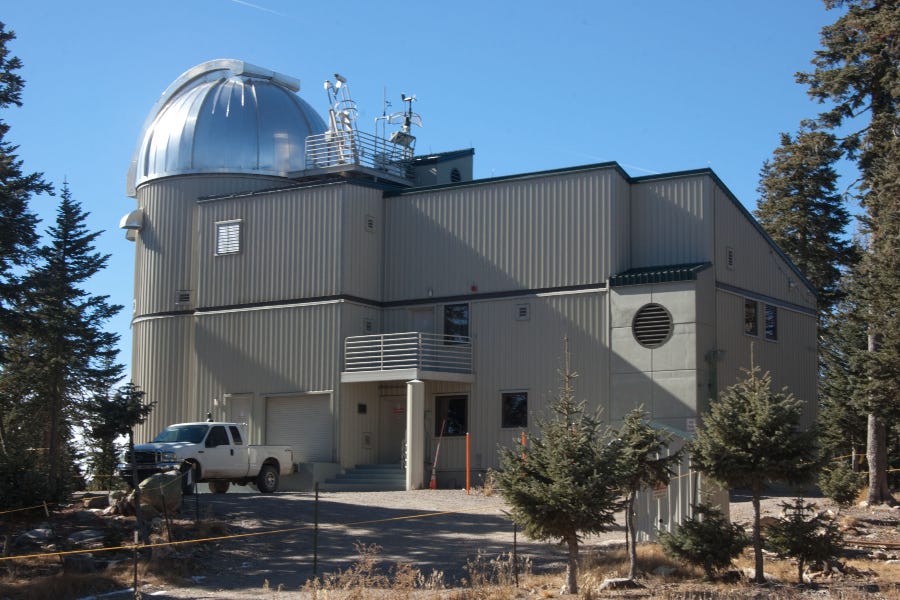
What does it feel like to have an asteroid named after you? And what can you tell us about Asteroid D’Souza?
It is a great honor to have an asteroid named after me. To be honest, I don’t know much about it. Only that it was discovered by my colleagues K. Cernis and R. P. Boyle, S.J., with our telescope, the Vatican Advanced Technology Telescope, on Mount Graham in 2012.
It is presently found in the outer part of the asteroid belt between Mars and Jupiter. This honor adds to the list of more than 30 asteroids named after Jesuits.
An asteroid is awarded a name once it has been observed long enough for its orbit to be determined with a fair degree of precision. This may take several years. But when it is achieved, the body is awarded a “permanent designation” (a number issued in numerical sequence) and the discoverer is invited to suggest a name for approval to a special committee of the International Astronomical Union.
Source link
